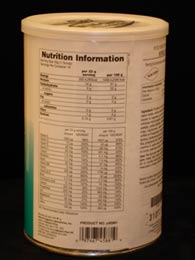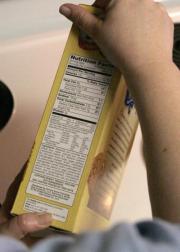Lawmakers like to force producers of foods and food supplements to put all kinds of information and warnings on their products, thinking that they are helping to "inform the consumer". But this may not be so at all.

“We went from virtually nothing to information overload", says Kimberly Lord Stewart, author of “Eating Between the Lines,” a how-to book on interpreting food labels.
Researchers from the University of Florida's Institute of Food and Agricultural Sciences have found that only half of all the consumers even look at the nutrition labels, and the vast majority of those limits their curiosity to answering the question: "How many calories does this food have". In the end, much of the information that is being put on labels is simply not read - it becomes more of a distraction than a useful help for making food decisions.
On the other side, we see limits to the availability of healthful substances - vitamins and minerals - as decreed in Europe by the infamous food supplements directive and under preparation in the US by the FDA through "adverse events reporting", as well as the absolutely stunning yearly figures of death by medicine. But as long as processed foods are being preferred over healthy organic produce, as long as altered fats destroy our metabolic balance and artificial sweeteners, cloned animals and GM ingredients are being promoted as "harmless", there is no wonder the majority of us are sick and health insurance can't keep up with the costs of hospitals and medication.
Food labeling today seems worse than useless, because it provides an alibi to legislators: "we have done all we could" to ensure consumer health, when the really big issues that destroy our health are festering underneath the glossy veneer. When you read the article presenting the research, note that the creators of "nutrition labeling" know that people don't read what has been so generously put there, but they also have no idea of what to do about it.
Are people perhaps looking for real food, rather than for information that makes the artificial kind more palatable?
- - -
Less is more for label readers, research shows
(see original article here)
 In this photo released from the University of Florida’s Institute of Food and Agricultural Sciences, a would-be consumer checks the calorie count on a box of cookies – Tuesday, Feb. 20, 2007. UF research shows that most people check nutrition labels for how a food product might affect their waistline, rather than taking into account a larger nutritional picture. (Tom Wright, University of Florida/IFAS)
In this photo released from the University of Florida’s Institute of Food and Agricultural Sciences, a would-be consumer checks the calorie count on a box of cookies – Tuesday, Feb. 20, 2007. UF research shows that most people check nutrition labels for how a food product might affect their waistline, rather than taking into account a larger nutritional picture. (Tom Wright, University of Florida/IFAS)